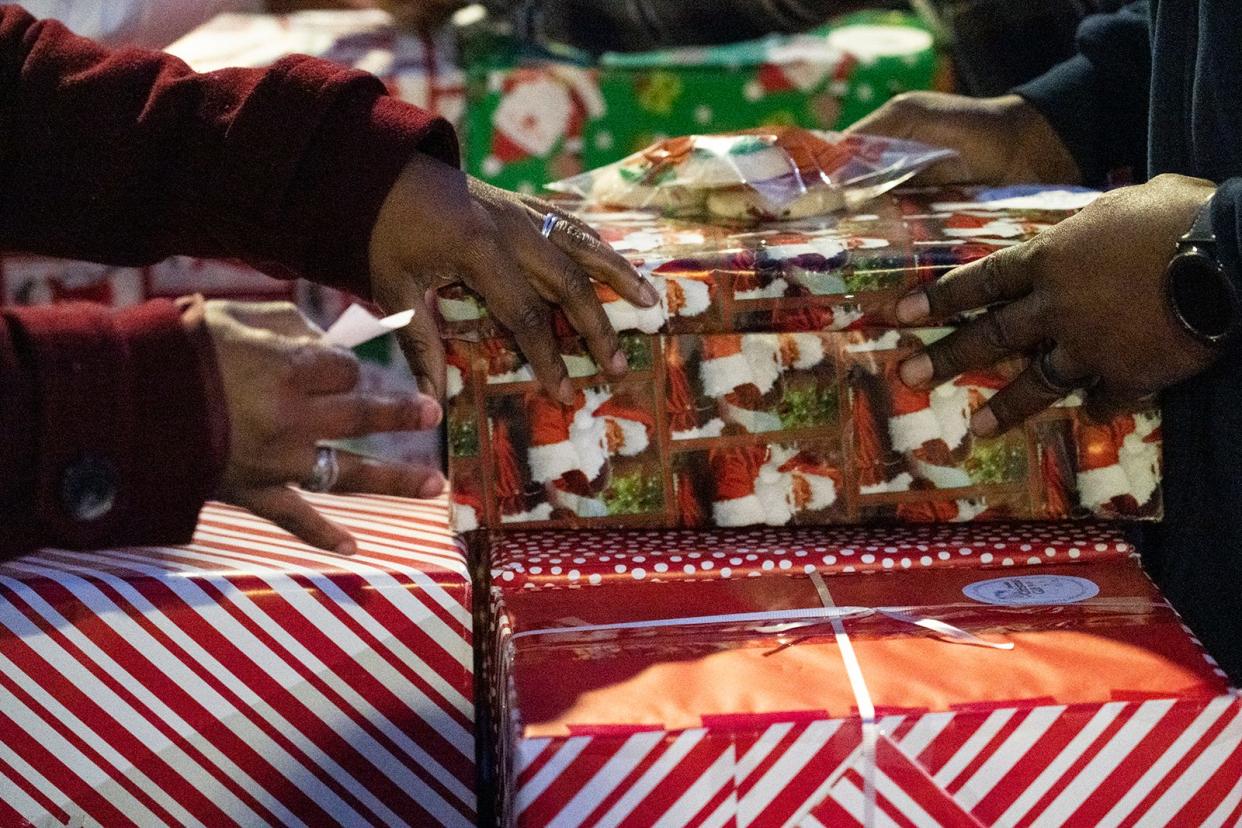Faith: Why do we give gifts at Christmas time? A history lesson

- Oops!Something went wrong.Please try again later.
One baby’s birth
slammed us
from BC to AD
started wars
and skirmishes
sired scholars
and skeptics
sparked cathedrals
and choruses
spurred commerce
and gift giving
Now what?
One can hope that school children learn B.C. means (Before Christ) and A.D. (stands for Anno Domini, Latin for year of our Lord), thus today, is presumed to be 2023 years after the birth of Jesus Christ. Dionysius Exiguus, a sixth-century Eastern Roman monk is credited with inventing the Christian calendar using BC/AD.
The Crusades were a series of holy wars and skirmishes in the 11th, 12th, and 13th centuries between Christians and Muslims in the Holy Land. The fights were about faith and ownership of land. Power, wealth, and prestige were soon attached to the holy wars. And in a misguided and mournful account, “Those [Christians] who took up the sword in the Crusading cause were promised absolution from their sins and eternal glory by Pope Urban II.”
Many other holy wars followed in history — The Wars of the Reformation, the Eighty Year War, the French Wars of Religion, and The Thirty Years’ War to mention a few.
The birth of the baby Jesus was extraordinary material for all kinds of scholarly work — experts studying everything from the point of time and place in history it occurred, to the phenomenon of a virgin birth, to the theology of the three person in the blessed trinity with the human presence of the Son of God appearing.
The New Testament — the Gospels of Matthew, Mark, Luke and John, are considered by many as primary sources of information about Jesus and his followers.
Non-Christian historical references of Jesus often include the first century historian Josephus and Roman historian Tacitus.
Of course, skepticism soared also. And it is understandable. One wonders: How could a miraculous birth occur? How could a poor Jewish carpenter inspire other men and women to leave their homes, follow him and change the course of history? How could this seemingly simple man preach and teach and cure and feed multitudes? How could this previously unknown person be called the Son of God?
After the birth of Jesus, particularly in the medieval times, cathedral building was believed to be an act of faith, a way to honor God. Religious and often community leaders were behind the massive undertakings that required fund raising, skilled labor and cooperation.
Chartres Cathedral in France, St. Paul’s Cathedral in England, Cologne Cathedral in Germany, Notre-Dame Cathedral in France, and the Cathedral of Milano in Italy are famous sites for believers and non-believers to visit and be inspired.
While cathedrals were being built after the birth of Jesus and religious fervor was alive, music flourished as well. Beginning with simple Gregorian chant of one voice line sung in unison by monks (at Mass or other holy times), polyphony — many voices singing in harmony — emerged. It was improvised at first. By the middle ages, this was the growing structure of humans singing together, sometimes with instruments.
From these early efforts of polyphonic music, we’ve receive many gifts — George Frideric Handel’s Messiah, Johann Sebastian Bach’s B Minor Mass, and Wolfgang Amadeus Mozart’s Great Mass in C minor, all remarkable musically and spiritually.
Christmas gift tradition: 12 families featured in the 25th Season for Caring program. Here's how you can help.
Although gift giving occurred in the pagan world in ancient times, it was the birth of Jesus that animated this tradition, modeled some believe by the three kings’ visit and gifts to the baby. St. Nicholas, a fourth century bishop was renowned for giving gifts to children and people in need, thus this grew into the legend of Santa Claus.
Commerce gradually, then dramatically benefitted from Christmas gift giving. It wasn’t that going to church, homemade presents and being with loved ones were forgotten, it was just that the birth of one special baby for believers became a far-reaching reason to celebrate. Soon, nonbelievers, joined the shopping frenzy and merchants were the winners.
Now what?
It should be noted that many historians believe that the actual birth date of Jesus is unknown. Some New Testament scholars figure Jesus was born between 6 B.C. and 4 B.C.
Wars and skirmishes continue. Even today, the Russian-Ukraine war is on-going and peace in the Middle East, and beyond, is once again threatened by the Israeli-Hamas war. In both cases of these wars today, land ownership, power and religion play a part.
The development of the computer and other technology tools are gradually facilitating historical research. Artificial intelligence might give us even more information in the future about the past.
As the secular world has gained popularity, systemic doubt concerning the birth of Christ and Christianity in general has increased.
Still cathedral building continues. Sacred architecture’s innovative approach and creative design attract the faithful and tourists.
Choruses continue to inspire and often modern composers thrill us with their spiritual creations.
Although gift giving at first was a family tradition, focused on children, today it’s ballooned. Business gifts to clients, office gift exchanges, and presents for service people, as well as remembering teachers and coaches, keep shoppers busy and merchants delighted.
And, thanks to St. Nicholas who modeled the real meaning of gift giving at Christmas, we remember children, of course, but also are reminded of the many opportunities to become gift-givers to the poor, the suffering and the forgotten.
Even little children and those with limited means grasp that gift giving is what brings true joy at Christmas.
Judy Knotts is a parishioner of St. John Neumann Catholic Church and former head of St. Gabriel’s Catholic School and St. Michael’ Catholic Academy. Her latest book, “You Are My Brother” is a collection of past American Statesman faith columns.
This article originally appeared on Austin American-Statesman: Faith: Why do we give gifts at Christmas time?

